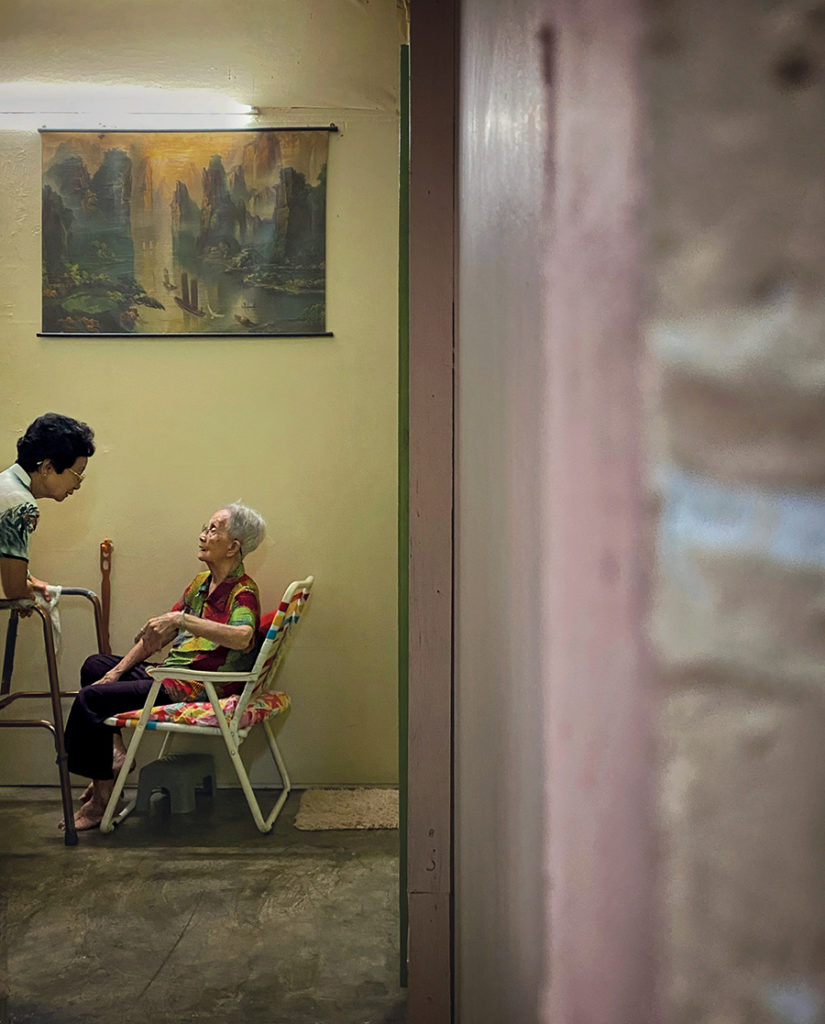Design for Aging is Design for All
September 20, 2023

Human lifespans are increasing around the world. According to WorldData.info, the average life expectancy worldwide rose from around 50.7 years for men and 54.6 for women in 1960 to 68.9 for men and 73.9 for women in 2021.1
Currently, this trend of aging populations is observed most significantly in developed regions—with Hong Kong, Japan and Singapore among countries with the highest life expectancies. Emerging economies are also experiencing this shift in various degrees, and the World Health Organisation posits that by 2050, 80 per cent of older people will be living in low- and middle-income countries.2
Everybody wants to live longer even if aging comes with a set of challenges.
The task of designers is thus to understand these multi-dimensional aspects of living longer and identify certain challenges in our existing built environments, which somehow make aging ‘an inconvenient truth’, so as to conceptualise solutions for a healthy and fulfilling life. Here, we present in-depth examples from designers and exponents who advocate designing for living longer better.
AGE-FRIENDLY ENVIRONMENTS AS A FORM OF CARE
FuturArc reached out to Ong Ker-Shing and Dr Joshua Comaroff, Lekker Architects, for further insights about caring for the elderly in the larger scope of the built environment. They have been involved in research collaborations, including those under Dr Belinda Yuen from Singapore University of Technology and Design (SUTD), with Dr Wong Chek Hooi from Geriatric Education & Research Institute (GERI), and others to imagine how spaces could work better for older adults—be it in living spaces or beyond the flat.
RELATED | A toolkit for persons with dementia and caregivers: Hack Care
“We encounter a much more complex set of issues beyond the individual home. Cities—even smaller parts of cities—are fantastically complex systems. And what we find very quickly is that different users have competing, and equally compelling, needs and desires,” Lekker wrote.
For instance, bicycles are a major source of stress for older pedestrians, despite being a more carbon-friendly mode of transportation than cars. “We are constantly telling clients that being inclusive doesn’t just mean ‘adding’… it means arbitrating among a diverse public and its requirements. We need to have neighbourhoods and estates that are lovely places to live in as an elderly person. Figuring out how we get there, while not losing track of other priorities, is a whole new frontier for research and design.”

CROSS-GENERATIONAL DESIGN?
We asked if designing for different generations in common spaces, e.g., children, could shed light on adequate design for the elderly—and if there were notable differences in designing for different age groups.
“What we’ve found is that there is no such thing as ‘the elderly.’ And as a result, there is no such thing as design for the elderly,” Lekker replied. “Older adults are not a monolithic group that can be defined around a common set of qualities or issues.”
RELATED | Building a Community of Care for the ‘Golden Sunset’ Years
For example, they found that a 65- or 70-year-old would say: “I take care of this old uncle,” referring to someone maybe 10 or 15 years older than themselves—who are typically less mobile or experiencing cognitive decline.
“Age, clearly, is a spectrum. Many of the issues that concern us when we were young adults (or even children) are what worry us when we are much older—albeit to an exaggerated degree. The notion of old age as a ‘second childhood’ has a great deal of truth to it, despite the fact that it might make us uncomfortable to think about,” Lekker observed. For this reason, Lekker prefers to think of the issues in terms of “design for aging.”
“This is necessarily inter-generational in emphasis, because it has to do with the relations of different bodies and minds in a common social space,” they wrote. “How can we enable people of different ages to act in complementary ways—to support each other and to use environments in common? This is an important shift away from thinking about design that ‘provides access’ to marginalised groups (like the elderly or the disabled) towards design that works for a greater diversity of users.”

We need to have neighbourhoods and estates that are lovely places to live in as an elderly person.
[This is an excerpt. Subscribe to the digital edition or hardcopy to read the complete article.]
Read more stories from FuturArc 3Q 2023 Green Awards: Cross-Generational Architecture!

1 WorldData.info, retrieved on 26/07/2023. https://www.worlddata.info/life-expectancy.php
2 “Ageing and health”, World Health Organisation https://www.who.int/news-room/fact-sheets/detail/ageing-and-health
3 Jonathan Yoe, “Why are older people working longer?”, US Bureau of Labor Statistics https://www.bls.gov/opub/mlr/2019/beyond-bls/why-are-older-people-working-longer.htm
4 David Amaglobeli, Vitor Gaspar, Era Dabla-Norris, “Getting Older but Not Poorer”, International Monetary Fund https://www.imf.org/en/Publications/fandd/issues/2020/03/impactof-aging-on-pensions-and-public-policy-gaspar
5 “Understanding the Dynamics of the Aging Process”, National Institute on Aging https://www.nia.nih.gov/about/aging-strategic-directions-research/understanding-dynamics-aging
To read the complete article, get your hardcopy at our online shop/newsstands/major bookstores; subscribe to FuturArc or download the FuturArc App to read the issues.
Previously Published Commentary
Contact us at https://www.futurarc.com/contact-us for older commentaries.
